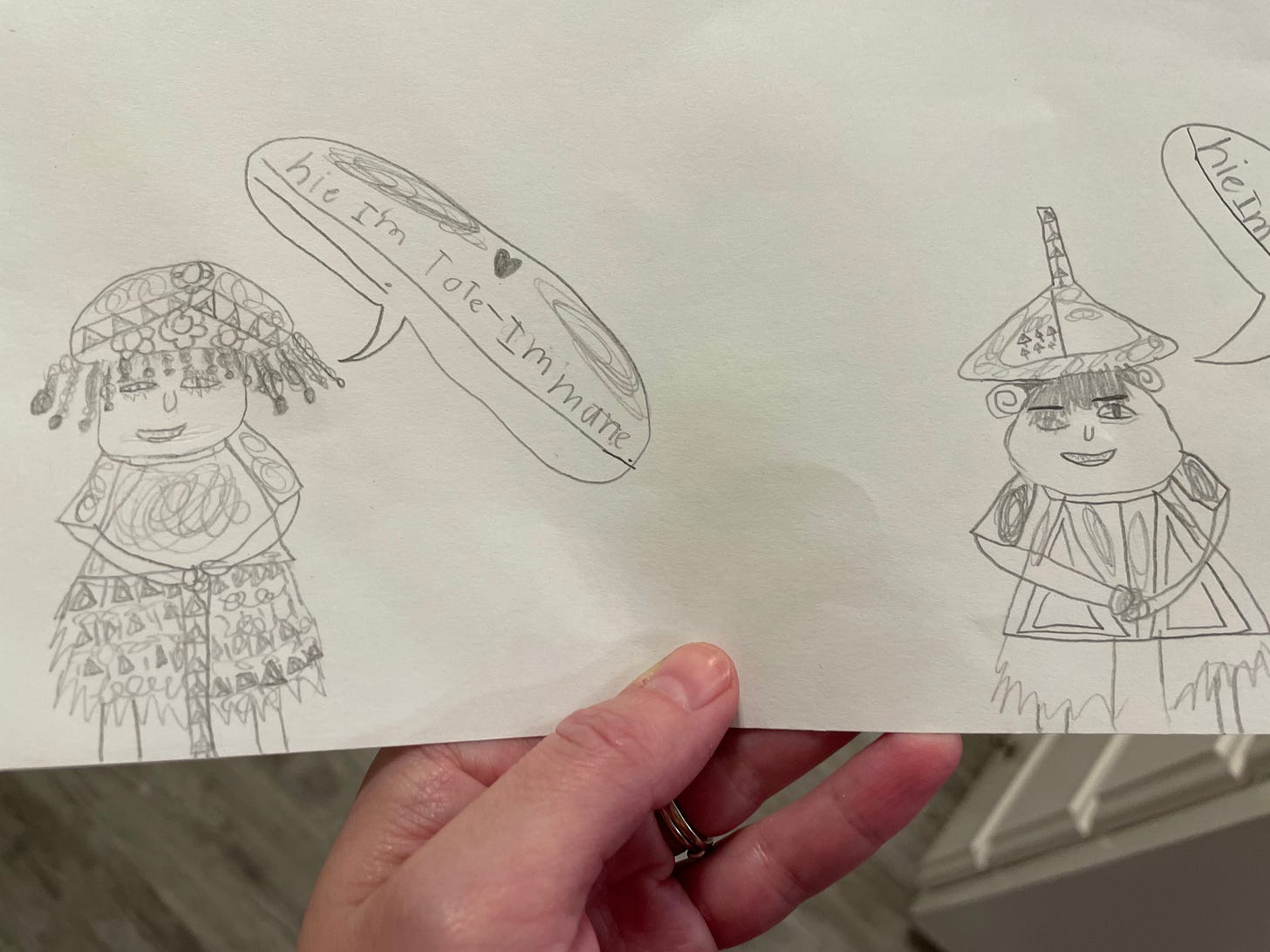
In 2020, a pivot towards anti-racism led our family to change elementary schools. Our oldest was a Kindergartener at the time and not inextricably tied to his current educational situation, especially with bouncing back and forth between virtual and in-person learning (weren’t those days great?).
We transferred him from his across-town-charter-school to our not-across-town-public-school where the racial composition was quite a bit different. His old school was 60.8% white and 5% Asian, and his new one was 41% white and 35% Asian. Not only did this better reflect the racial demographics of our own neighborhood, but it also opened the door for the natural, interracial friendships that only an elementary classroom can foster.
Many of our school’s diversity efforts center the Hmong culture, which represents a large part of the 35% of Asian students. During the week of Thanksgiving, the Hmong New Year (which follows the lunar calendar) is proudly celebrated school wide.
On the day of the celebration, Hmong students are invited to wear their traditional clothing, which floods the school with color. Students give the morning announcements in their native language, and classrooms feast on homemade eggrolls donated by parents. (I am still waiting for my kids to actually try said eggrolls).
Finally, classes pause, and it’s time for the parade. All the Hmong students and staff begin their walk through the school, hallway by hallway, showcasing their regalia. The students lining the hallways reach out their hands for high fives and cheer for their Hmong friends; everyone is caught up in the celebration of their beautiful culture. Although I only get to experience this through pictures (this is an in-school only event), it’s quite a thing to behold. It is the opposite of colorblindness, “we don’t see color, we’re all the same!” Rather, it’s what pastor Derwin Gray refers to as color blessedness, “we see you, we see your culture, we celebrate the uniqueness that you add to life.” The school wouldn’t say it this way, but they are honoring the Imago Dei in all students. Likewise, my kids get to honor the Imago Dei of their Hmong friends in real time, not just in theory.

There’s one more significant aspect to this New Year celebration: the fact that it shares the same week as Thanksgiving. It would be so easy to let Thanksgiving rule the week- it’s a national holiday, it’s traditional for Americans, and pumpkin spice is now an institution in itself. But the Hmong New Year is not just an add-on to Thanksgiving week at our school (#happyhmongnewyear), it is primary. It’s a both/and, not an either/or situation
When I look at how Hmong students are honored during this week, I see an example of what it means for a dominant culture to willingly take a step down so that a minority culture takes a step up. It’s a lesson that a holiday like Thanksgiving can share the stage, or yield the stage, and be just fine. The holiday will still be a holiday! By clearing space and dedicating time, the Hmong students are truly seen, not just acknowledged. And that is what it means to lay down power. That is what it means to live at peace with one another.
In hindsight, transferring to our neighborhood school was absolutely the right decision. It’s given my family a glimpse into the beautiful, anti-racism work that can be done in the public square. It has helped us integrate more naturally into our neighborhood community. And that is absolutely a thing to be thankful for this Thanksgiving.





